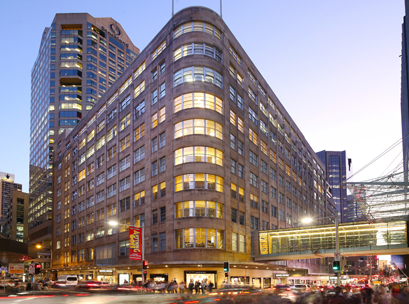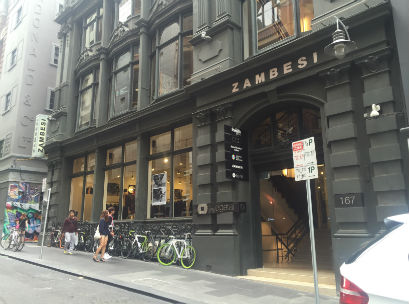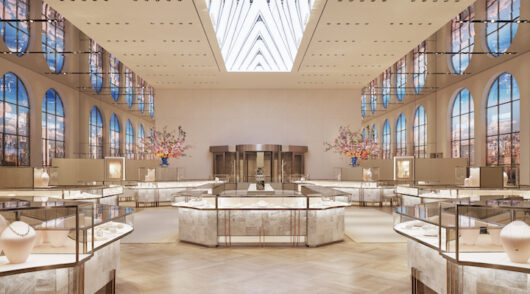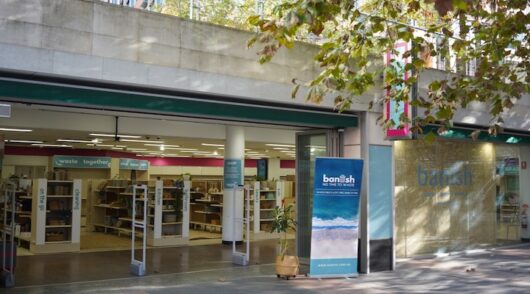 Australia’s ongoing development is transforming CBDs from nine-to-five business hubs to 24 hour cities, drawing an influx of international and domestic retailers to prime seven-day trading space in high street locations. However, new research suggests that competition for leases and increasing foot traffic has pushed up rents, forcing many retailers to get creative.
Australia’s ongoing development is transforming CBDs from nine-to-five business hubs to 24 hour cities, drawing an influx of international and domestic retailers to prime seven-day trading space in high street locations. However, new research suggests that competition for leases and increasing foot traffic has pushed up rents, forcing many retailers to get creative.
A recent report into retail space in Melbourne’s CBD released by CBRE dubbed the phenomena the emergence of ‘micro stores’, claiming that a myriad of retailers are moving into stores sized at 60sqm or less – with some spaces as small as 18sqm.
“Increase in property values is resulting in an increase in population growth … which is increasing in the size of turnovers and has increased rents,” CBRE’s Victorian head of retail leasing Zelman Ainsworth told Inside Retail.
“Retailers are saying that it’s better to have three small stores in three pockets of the CBD then having one big store because you get to touch onto three different demographics and three groups of foot traffic.”
According to the report rents have grown 31 per cent in Melbourne’s core CBD in the last five years, as store number growth significantly outpaces stock growth across a variety of retail categories, including convenience stores, food and domestic hardware/homeware retailing.
Domestic hardware/homeware store numbers have increased by 50 per cent since 2011, but the area take up as a proportion of total retail space only grew by 10 per cent. The average store size has also decreased from 456 sqm to 333 sqm. In the case of food retail stores, 81 additional venues have opened over the last 5 years, with an average size of just 39 square metres.
Ainsworth says that the conditions aren’t contained to Melbourne, pointing to a similar situation in Sydney and predicting that Brisbane may be next. According to data released by Colliers International last week shopping centre rents in NSW are pegged to continue to increase by 2.14 per cent on average in the next 12 months.
“Gross face rents within shopping centres will experience growth over the coming 12 months, based on a mix of CPI linked contractual increases and our forecasts for increasing retail demand,” Colliers’ director of research, Daniel Lees, said.
“Our outlook for further rental growth is supported by institutional commentary during the most recent reporting season, where landlords including Charter Hall Retail REIT, Mirvac, Shopping Centres Australia, GPT and Vicinity Centres noticed positive re-leasing spreads in a range of 0.5 per cent to 7.5 per cent” he continued.
Shifting retail strategies
Rising rents are a significant issue for retailers moving forward, according to Australian Retailers Association chief Russell Zimmerman, who says that the current state of affairs is ultimately unsustainable.
“If you look at rents across the board most landlords have a clause in their lease which is either a five percent year on year with CPI plus 2 or 3,” Zimmerman told Inside Retail Weekly. “Unfortunately retail is not growing at anything like that rate.”
“You cannot keep having rents outstripping the growth in retail; we will get to a point of saturation,” he added.
The conditions are affecting the urban strategies of retailers large and small. Ainsworth explains that in some cases major players like Coles and Woolworths are going from 4000sqm to 900sqm stores in CBD areas, opting to open a variety of express and metro offerings with limited ranges.
The smaller CBD offerings have prompted a rethink on traditional CBD trade, with tough decisions to make about which products to stock and the need for more frequent and precise store replenishment, which Zimmerman says will ultimately convey a larger cost to retailers.
“More deliveries, more often means bigger cost to the retailer,” he said. “There will be people who will want to see a full range of products, and they’ll have to go to the bigger stores.”
David Jones CEO John Dixon is seemingly more optimistic about the future of smaller format stores. Speaking at the opening of its latest CBD concept venture in Sydney’s Barangaroo precinct —which, coming in at just under 1400sqm, is a tenth of the size of an average DJs— he pointed to functionality like click and collect as an enabler to its entire product range.

Although many other retailers are simply being pushed out of core CBD locations. Melbourne’s Flinders Lane retail strip has seen rental rates increase 44 per cent since 2011, outperforming core CBD rental growth in a move that Ainsworth says is breathing new life into outer urban areas.
“The retailers that are able to achieve [in the core CBD] and the ones that aren’t are looking to strip retail areas, which are seeing a new revitalisation,” he said. “Strips like Atkins Street, Chapel Street and Bridge Road … retailers are now leveraging off more affordable entry level rents.”
Hero stores make statements
However, as retailers like Bailey Nelson, Doughnut Time and Practical Man move into micro stores, others are taking the opposite approach. Speaking to IR, RCG Corporation co-CEO Daniel Agostinelli said that RCG are actually looking to expand their existing CBD locations with their Hype DC and Platypus brands.
“Our core customer expects us to have a real commitment to a CBD store,” he said.
“If you are going to lead in the space you need to have a fantastic best in the market offer in the CBD and we are finding that B and C shopping centres are no longer resonating with our consumers,” he continued.
The higher rents are a factor for RCG too, but Agostinelli said that landlords will always want to increase rates, and that CBD stores have an added benefit that doesn’t show up on balance sheets.
“Opening larger stores allows our brand to be much more in demand in CBD and in the suburbs – it helps the rest of the business to have a better identity with the consumers we attract in general,” Agostinelli explained.
Zimmerman calls them “hero stores”, recognising that they aren’t going anywhere; even if rents are increasing retailers will fork out to have their brand in the right places and provide consumers with physical access to their full range.
“You have to evaluate whether you’re actually making money on those larger stores, or whether they are hero stores so that people can see your entire range of products – that will be a test for retailers moving forward,” he said.
Access exclusive analysis, locked news and reports with Inside Retail Weekly. Subscribe today and get our premium print publication delivered to your door every week.





